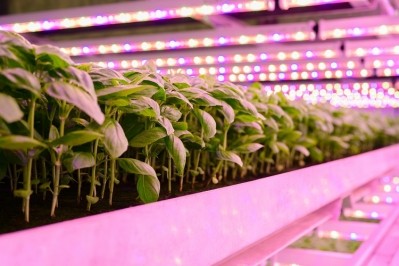New 'revolutionary’ vertical farming tech unveiled: ‘We have developed a vertical farming solution which will be a complete game-changer’

British ag tech pioneer Innovation Agri-Tech Group (IGA) has unveiled its new GrowFrame 360 vertical farming solution. The culmination of research and development efforts that have been underway since 2017, IGA chief executive Jaz Singh said he believes the innovation will help vertical farming proponents reach the ‘next level’ of production to revolutionise the way food is produced in the UK and globally.
“Since the beginning of this journey, I knew the IAG technology was outstanding,” Singh explained. “We have ambitious sales targets and can’t wait to see the reception the GrowFrame will have in the UK and wider global community.”
Since IAG’s conception, a dedicated team has been working to create the most optimised vertical farming system possible. IAG’s patented system, the GrowFrame, has been refined to result in a ‘highly precise growing process’ using technology developed with carefully selected British partners. Drawing on each trial completed, every project documented and the support of its professional partners, the new GrowFrame has been proven to produce a healthier root system, superior crop growth and yield, the company claimed.
“We have been developing our patented flagship GrowFrame and have complete faith that we have developed a vertical farming solution which will be a complete game-changer. A genuine testament to the hard work, vision, skill and understanding from our own exceptional team. With our recent successful investment, our unswerving commitment to R&D, we are proud to showcase to the world what we have been working on behind closed doors,” the group’s chief executive elaborated.
The IAG GrowFrame’s top five benefits
IAG’s technology offers a number of benefits when compared to other vertical farming solutions currently on the market, the company claimed.
Listing its top five advantages, IAG detailed:
- No climate dependency – the IAG GrowFrame doesn’t require sunlight and eliminates weather and seasonal dependency, allowing crops to be grown any time of the year, from anywhere in the world.
- IAG’s exclusive technology accelerates crop growth to potentially 15 harvest cycles per year, compared to the three-to-four of traditional farming, with the equivalent of 10 acres of growing space housed within 135m2 .
- The GrowFrame 360 Solution is fully automated and managed from a Human Machine Interface (HMI), with real-time data monitoring. The system is also scalable, allowing businesses to upscale when ready.
- The closed loop irrigation system uses 98% less water than traditional farming. What’s more, once completing the loop, water is cleaned using UV treatment, sumps, and filters, before going through the process again, eradicating waste.
- The GrowFrame uses coco peat over soil, meaning no chemicals, pesticides, or soil maintenance.
Supporting food security and fighting hunger
Alongside commercial opportunities, IAG said the technology can be used on a global scale to help with real-world problems facing the population on daily basis.
The company wants to avoid a pitfall faced by many high capex technology-driven industries, that run the risk that their output will only be available to rich people. IAG is working with charities to become the ‘first vertical farm to take a tangible step towards ending world hunger and malnutrition’, it claimed.
Current estimates from the UN show that 8.9% of the world’s population, which equates to nearly 690 million people, are hungry. By developing a drought resistant solution, IAG’s GrowFrame can be put to work in both countries with minimal water supply, as well as in urban populations with limited space, to help tackle the challenge head on.
“Having seen first-hand how arable land in India was depleted by traditional open-field farming, I truly believe that Vertical Farming will become an integral part of the way we grow food around the world and feed our increasing population – especially with terrifying predictions from the UN that the number of people affected by hunger would surpass 840 million by 2030,” Singh stressed.


















